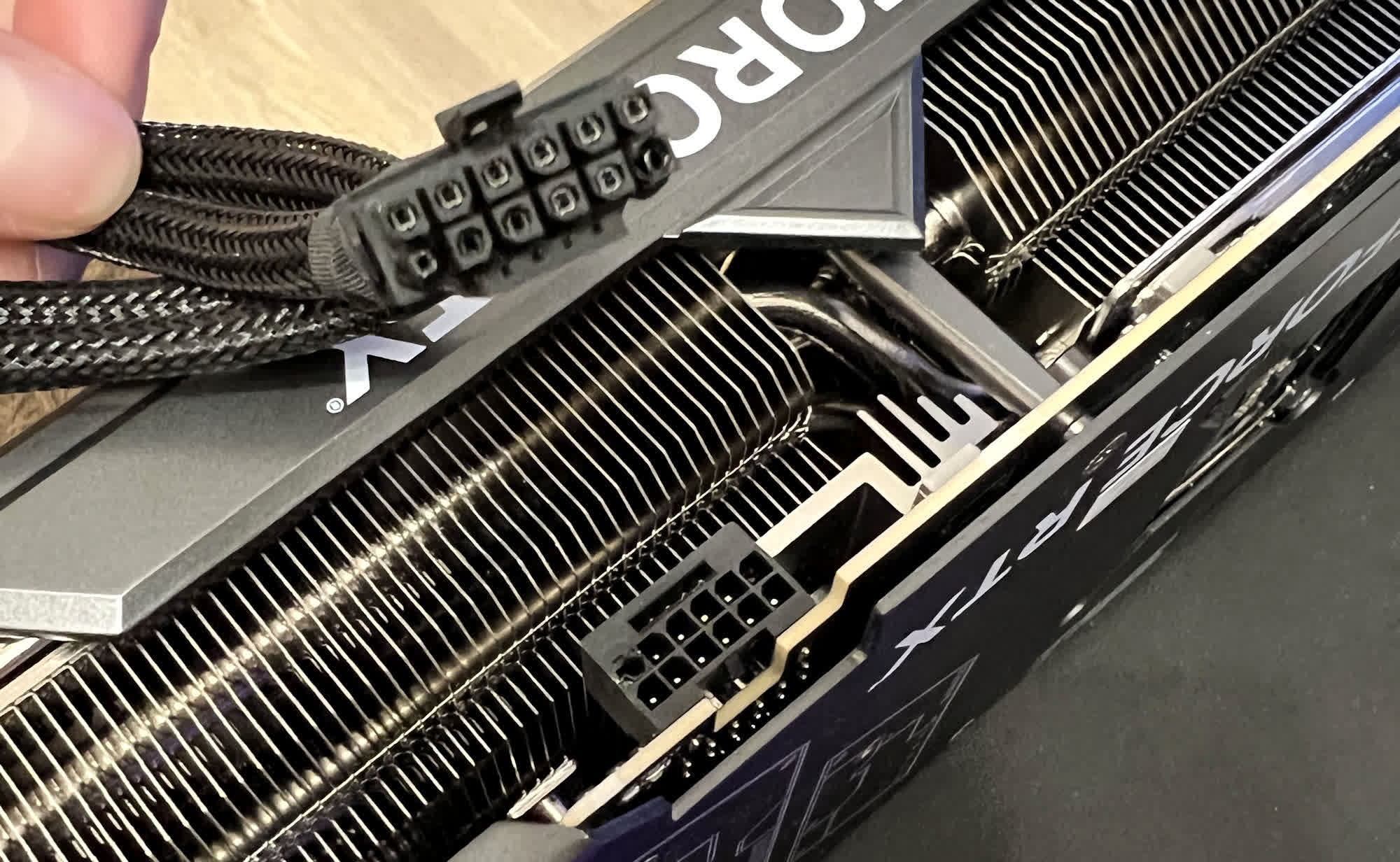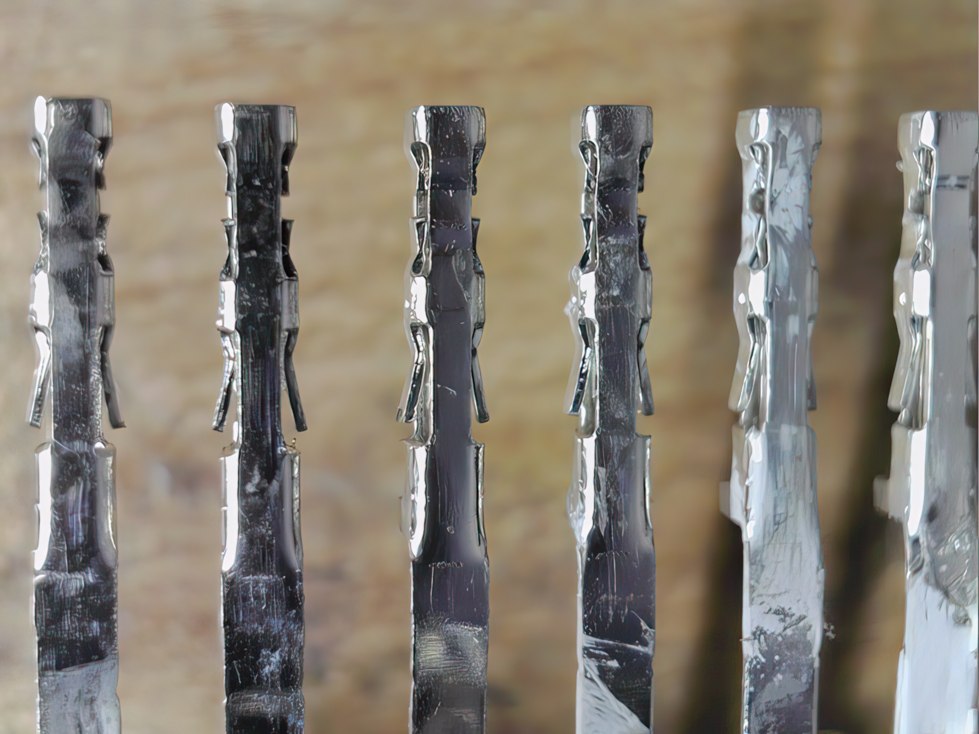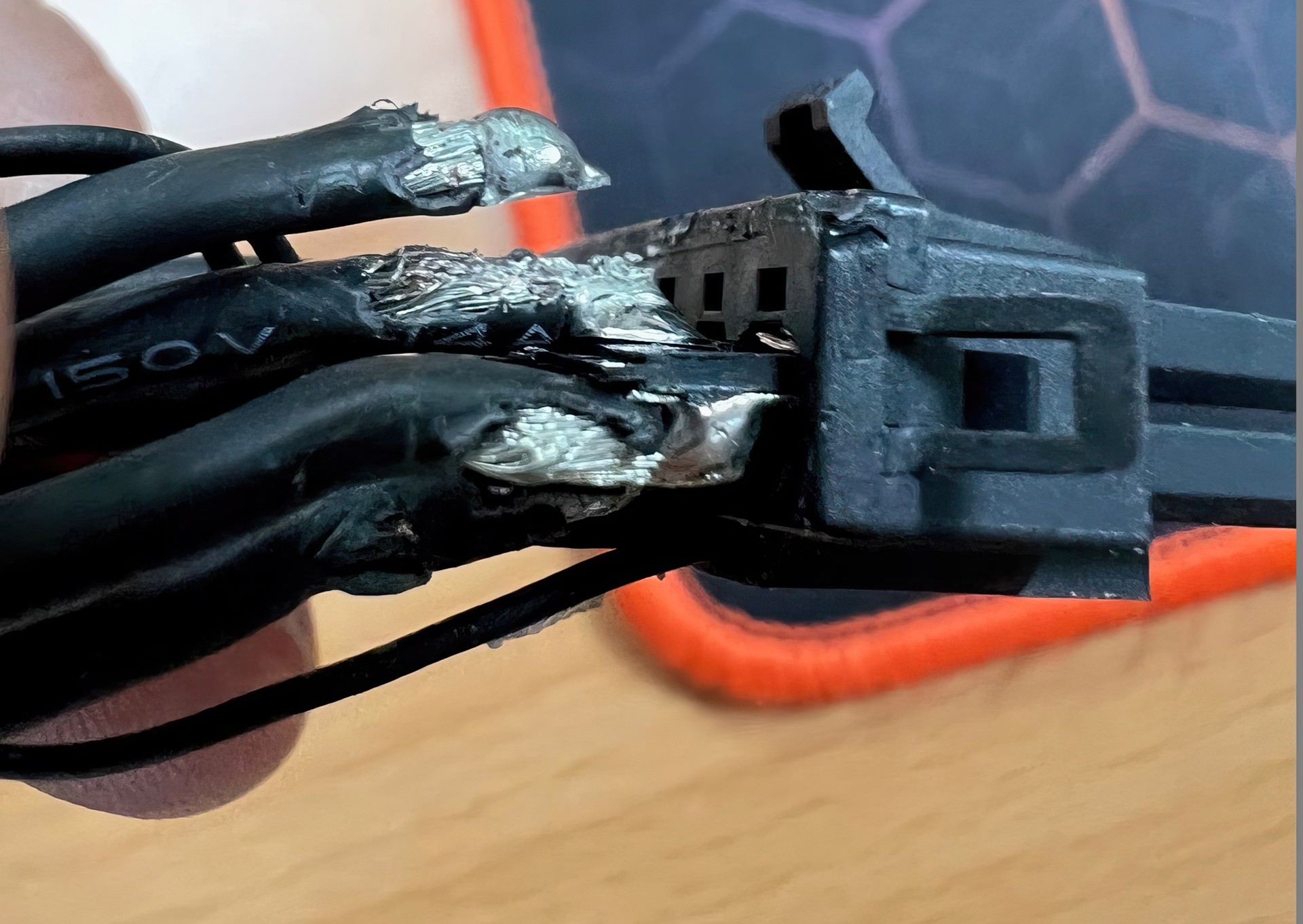Why it matters: Since October, dozens of RTX 4090 owners have reported melting power adapter cables. Despite investigations from Nvidia and third parties, a definitive cause has yet to be determined. It was thought that pairing the GPU with an ATX 3.0 power supply was a safe solution… until now.
A new report of a burnt GeForce RTX 4090 power cable has emerged on Reddit, but this case is fundamentally different from prior incidents. If it's connected to the same flaw, it could cast doubt on earlier theories as to the problem's source.
User "Shiftyeyes67k" posted a picture of severe burn damage on a 16-pin 4090 12VHPWR power cable connector and the corresponding connection port on a 1000W BeQuet Dark Power 13 ATX 3.0 power supply. This case is potentially significant because despite looking similar to previous examples of scorched 4090 cables, it lacks two common factors between the others.
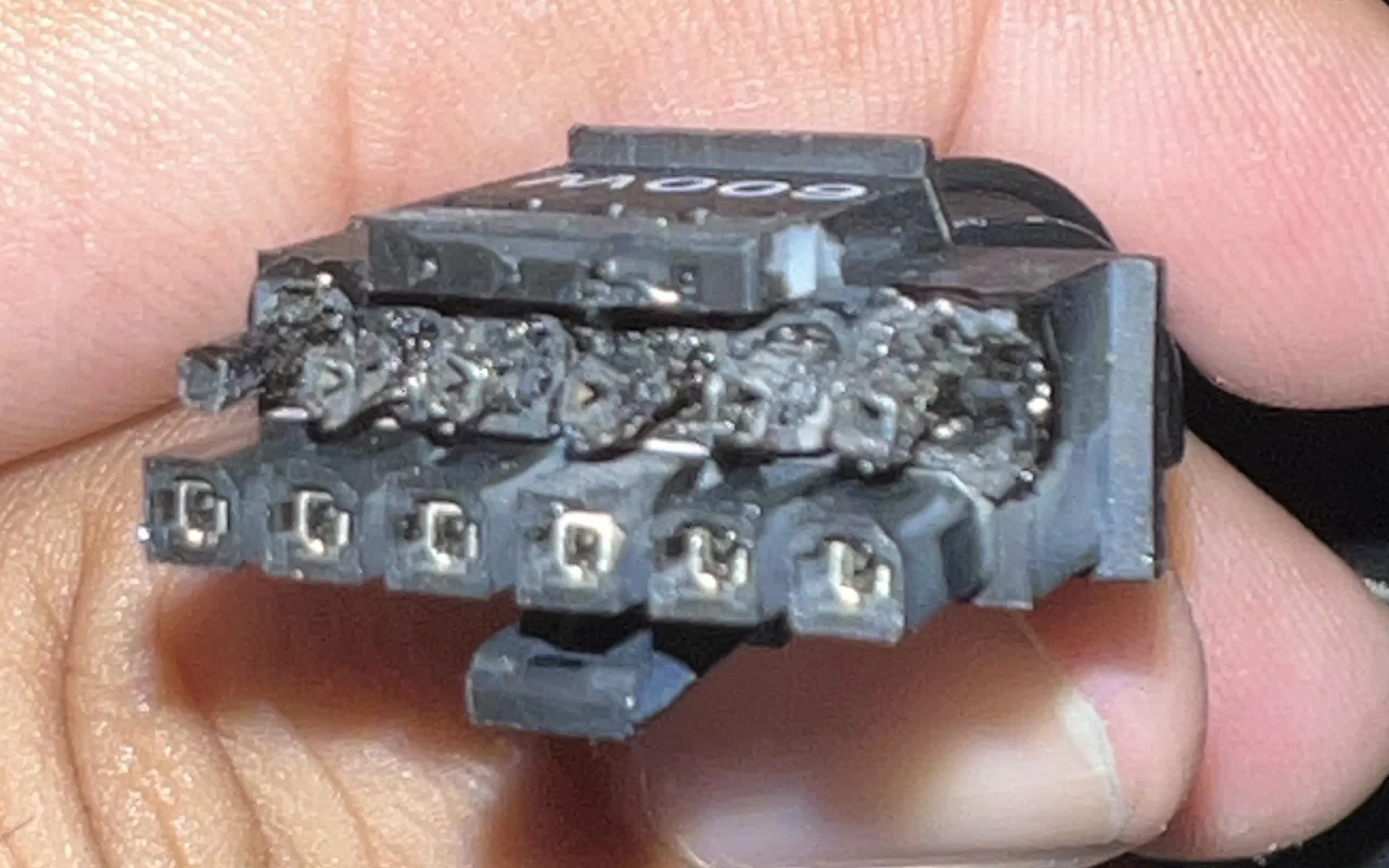
The few dozen cases that have emerged since October resulted in damage to the connectors plugged into the graphics card. Furthermore, they all affected customers who used the 4090's bundled 16-pin connection adapters to plug the GPU into an ATX 2.0 power supply's 12-pin socket.
Shiftyeyes67k bought an ATX 3.0 PSU with a 16-pin socket specifically to avoid this problem. Prior incidents led users to blame the adapter, and upgrading to an ATX 3.0 power supply is a small investment compared to the $1,600 4090, but this instance involved no adapter. Another owner who reported the problem last month had used a high-end third-party adapter, casting early doubt on Nvidia's included attachments as the source of the issue.
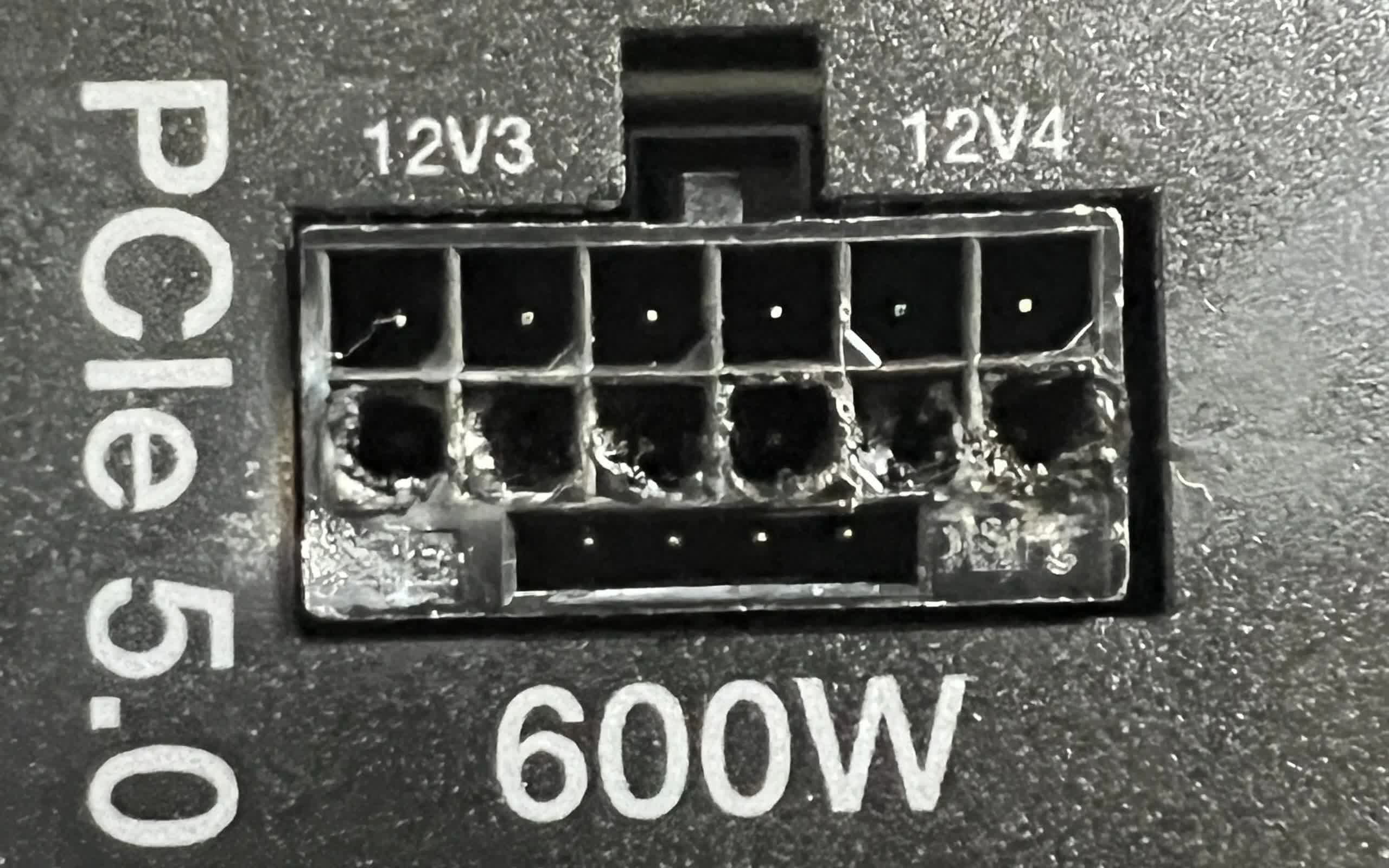
Nvidia, acknowledging about 50 cases worldwide in November, blamed improperly connected cables. Multiple affected users claimed they were confident their cables were fully connected, but others say the 12VHPWR connector easily loosens and can be less secure than it appears. Those wishing to take extra precautions can use a new feature in GPU-Z to check their GPU's power cable connection firmness.
Whatever the true cause is, it remains unresolved over half a year after Nvidia's last public statement regarding the issue. One user launched a class-action lawsuit against the company in November, and the reports have provided AMD with verbal ammunition in its rivalry with Nvidia. If more ATX 3.0 owners report damaged 4090 cables, it could point to a deeper problem with Team Green's flagship product.
https://www.techspot.com/news/99094-another-16-pin-rtx-4090-power-adapter-has.html
